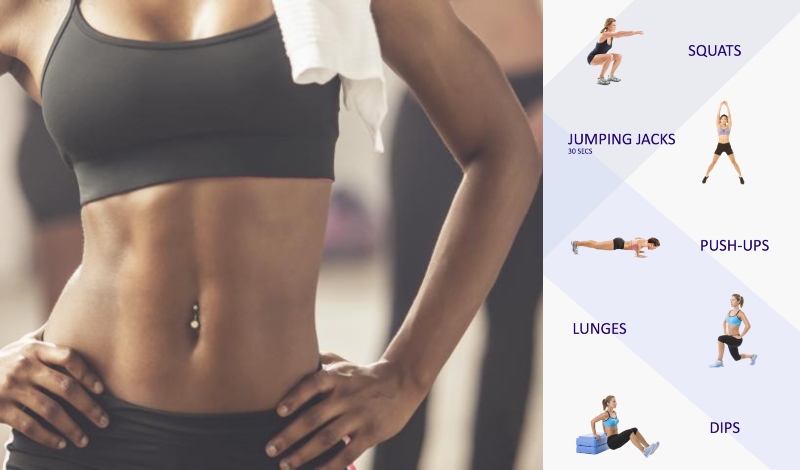Exercise is one of the best things you can do not just for your body, but also for your brain too. The more you use the body-mind system, the more it will grow. Think of movement as a way to code your nerve networks.
A variety of exercises that present unique challenges will code your body and brain for high-level functionality. Which means that by providing your body and brain with new information, you’re upgrading yourself! Here are some of the best!
1. Wrist Flexion Raise
Think of all the amazing things your hands do: grip, write, tie your shoelaces, perhaps play the piano or climb up the side of a mountain. Improving hand dexterity improves the neural networks in the brain that control these fine motor skills. And grip strength is important too.
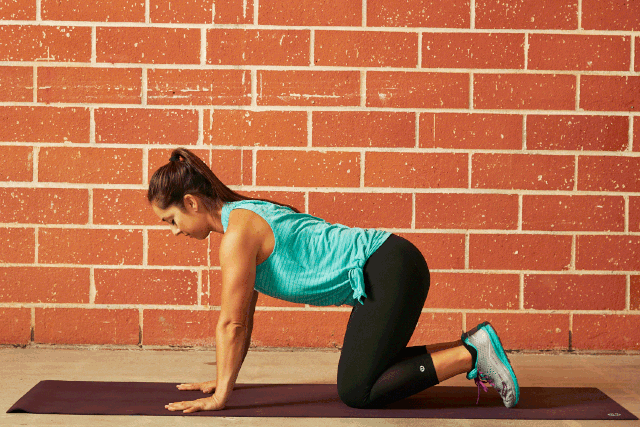
How to:
- Start in a kneeling position with your hands flat on the floor, fingers spread wide.
- Lift your palm and thumb off the floor, but keep the base of your first knuckle of the other fingers on the floor as you flex your wrist.
- Slowly lower down.
- Perform 20 repetitions.
Related article: Firm Your Butt and Smooth Your Thighs In Less Than 5 Minutes a Day With 10 Moves That Target Cellulite
2. Segmental Cat-Cow
The human spine consists of 24 articulating joints. The health of those joints is reliant on movement, since cartilage has no direct blood supply. And a mobile, healthy spine ensures that information is sent effectively from your brain to your body and vice versa.

How to:
- Start on all fours with your knees under your hips and your hands under your shoulders.
- Draw your navel in toward your spine and arch your back like a cat.
- Starting at your tailbone, begin to extend your spine, vertebrae by vertebrae, until you are in a swayback position.
- Then reverse and articulate the spine back into flexion.
- Go very slowly, noticing which segments feel stuck.
- Work with this move for at least two to four minutes in a focused manner.
3. Block-Balance Hip Rotation
Proprioception is like your sixth sense. It’s your perception of movement and body positioning as your joints and tissues provide feedback to your brain and help you maintain balance. This move targets the hip joint for greater mobility and control of movement. It’s an excellent move to do after sitting at a desk for prolonged periods of time.
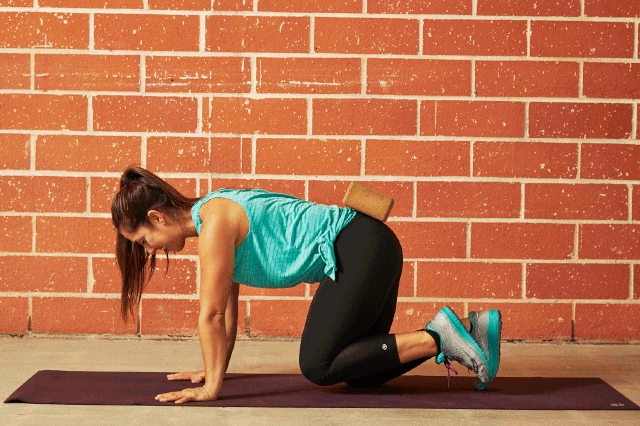
How to:
- Starting on all fours with your knees hip-distance apart and your hands shoulder-width apart, place a yoga block on your lower back.
- Keeping your knee bent at a 90-degree angle and your foot flexed, lift your knee out to the side.
- Engage the tissue around your hip joint as you slowly begin to circle the leg at the hip while keeping your pelvis stable.
- Squeeze your glutes and draw your heel toward your buttocks.
- Perform three rotations in each direction per leg.
Related article: Try These 10 Best Free Weight Exercises for Women To Get Stronger And Leaner
4. Dead Bug
Could targeting your core help you handle stress better? Postural exercises, coordination and balance moves can improve how you deal with stressors by enhancing your brain-body connection. The stronger your neural connections are, the better you’re able to deal with stressful situations in a constructive way.
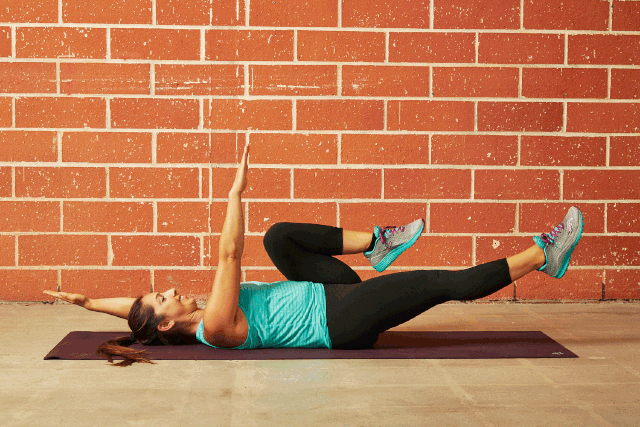
How to:
- Lie on your back with your head down, your arms and legs up toward the ceiling and your knees bent.
- Draw your navel in toward your spine and minimise the space between your lower back and floor.
- Keep your core engaged as you lower your right leg and left arm toward the floor (hovering but not touching).
- Keeping your arm and leg straight, return to centre and switch sides.
- Complete 10 repetitions per side.
5. Bear Crawl
As soon as a baby begins to crawl, it learns how to step forward with its right knee and left arm and vice versa. This movement strengthens the signals from left to right hemispheres of the brain. So, as an adult, go back to the basics and take baby steps toward better movement with crawling.
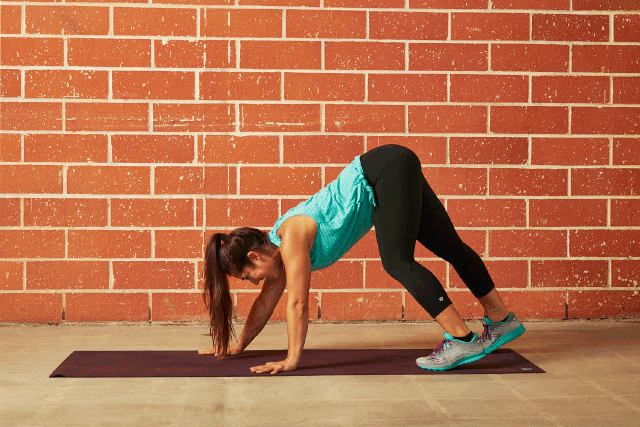
How to:
- Starting in a downward-facing dog, look about six inches forward at a point between your hands.
- Step your right hand forward as you step your left foot forward.
- Repeat on the other side as you “walk” forward.
- For an extra challenge try it backward!
- Perform two minutes moving forward and two minutes moving backward.
Related article: 6 Standing Abs Exercises For A Sexy Six-Pack And Slender Body Sculpt
6. Lateral Tabletop Crawl
For the next few moves, you’ll be working on primal movements that get you moving and thinking outside the box. Challenging your cerebellum — located at the back of the brain — with coordination and balance exercises can also have a positive effect on your ability to make decisions.
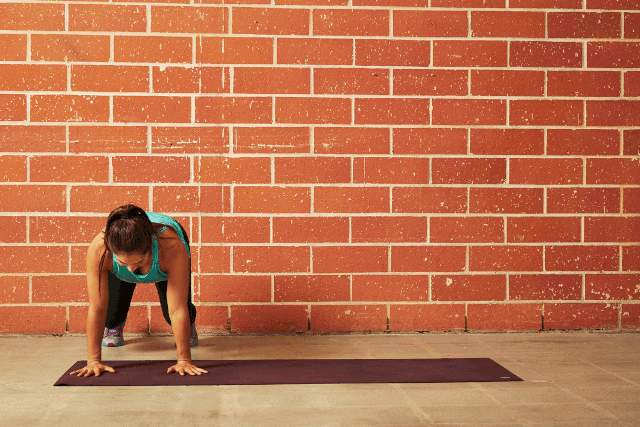
How to:
- Start on all fours with your shoulders and hips level.
- Draw your navel in toward your spine and lift your knees about one to two inches off the floor.
- Maintain this position as you step your right foot to the right.
- Shift your weight into your right hand as you cross your left arm over your right.
- Step the right hand to the right.
- Keep repeating this for four to five paces, and then perform going to the left.
- Complete three to four rounds.
7. Crab Crawl
This exercise is fantastic for improving shoulder strength and activating your hamstrings and glutes. It also challenges your coordination, which can improve your thought organisation and processing speed as well.
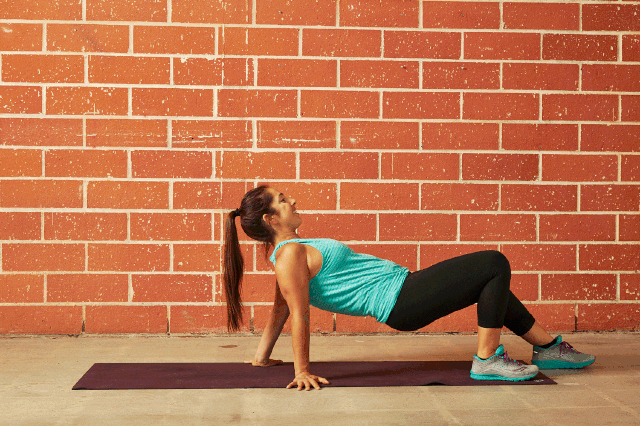
How to:
- Sit with your legs hip-distance apart and slightly bent.
- Lean back and place your hands behind your hips.
- Keep your fingers turned out to the side or pointing away from you.
- Press into your heels and hands as you lift your hips off the floor.
- Step your left foot and right hand forward, and then switch as you move forward.
- Perform this move for 30 seconds going forward and 30 seconds going backward.
Related article: 10 Tips On How To Lose 10 Pounds Without Totally Changing Your Diet!
8. Ape Walk
When others see you performing this move, they may think you’ve gone crazy. But have no shame! This is an excellent locomotion drill (aka the ability to move from one place to another) that forces your brain to focus on a strange movement pattern instead of mindlessly running through a steady-state exercise.
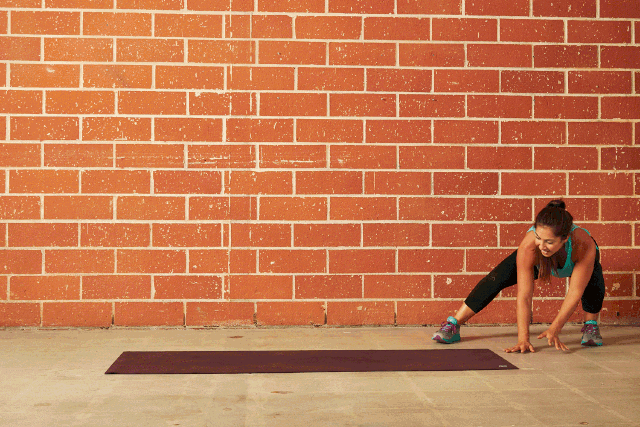
How to:
- Starting in a deep squat, lean forward and place your hands on the floor about one foot to the right.
- Shift your weight into your hands and as lightly as possible, jump your feet over to the right, landing back in a deep squat.
- Repeat for four to five paces to the right, and then repeat the movement to the left.
9. Scorpion Flip
This move is like a dance. You must learn each step slowly and practice awareness and control before you can find fluidity in the exercise. The mere act of learning how to put this move together is beneficial for brain and body. If your spine or hips are feeling stiff, you may want to hold off on this move until you improve your mobility.
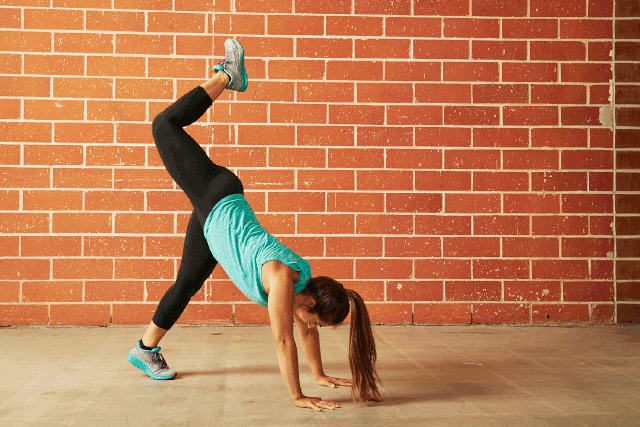
How to:
- Start in downward-facing dog and lift your left leg, bending the knee to 90 degrees.
- With control, bring the foot to the floor behind you as you rotate your torso and land in a crab position.
- Lift your right arm and reach to the left as you begin to lift your right leg up and over, landing in the start position.
- Complete three repetitions on both sides.

